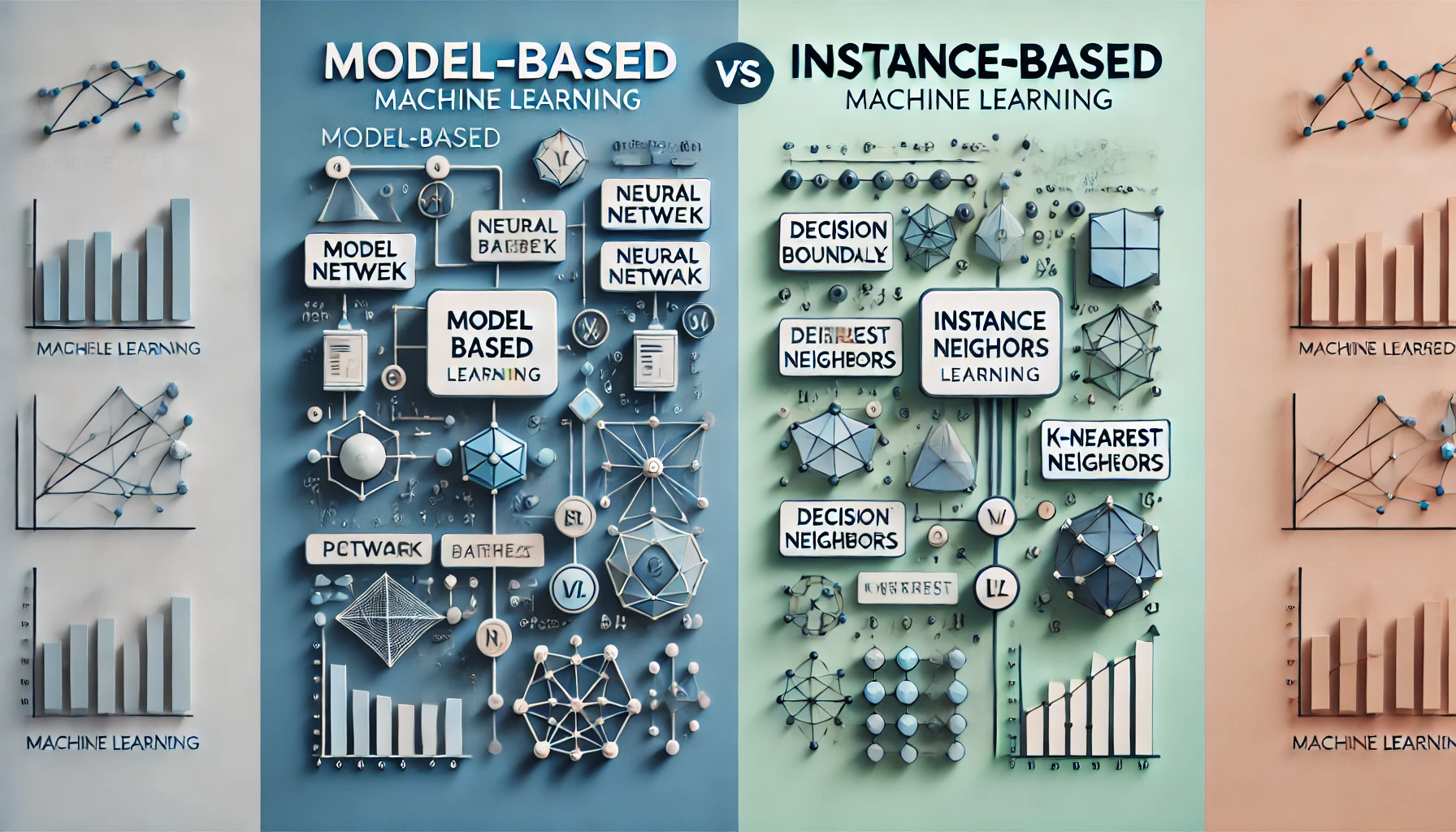Instance based vs Model based ML.
 Arpit Singh
Arpit Singh
In machine learning, instance-based learning and model-based learning are two fundamental approaches for making predictions. Let's explore and understand the differences between them.
Instance-Based Learning
Instance-based learning, often referred to as lazy learning, focuses on storing training instances and making predictions based on the similarity between new instances and these stored examples. There is no training phase involved. The key features include:
The model does not create a generalized representation of the data but retains the training examples. When a new instance is encountered, it compares this instance to the stored examples to find the most similar ones (e.g., using distance metrics) and makes predictions based on these neighbors, most notable algorithm is k-nearest neighbors (k-NN).
Advantages
Flexibility: It can easily adapt to new data without needing retraining.
Complex Relationships: It can handle complex relationships in data without requiring explicit model assumptions.
Disadvantages
Computationally Intensive: Requires significant memory and processing power, especially with large datasets since it must compare each new instance against all stored instances.
Poor Generalization: Tends to perform poorly on unseen data if the training set is not representative of the broader population.
Model-Based Learning
Model-based learning involves creating a predictive model that generalizes from the training data to make predictions on new instances. This approach seeks to identify underlying patterns and relationships within the data.
A mathematical model is constructed from the training data, which can then be used to predict outcomes for new instances. This model captures general trends rather than relying on specific examples, linear regression, decision trees, support vector machines, and neural networks are some of the common algorithms used.
Advantages
Generalization: Capable of making predictions on unseen data by capturing underlying patterns34.
Efficiency: Once trained, models can make predictions rapidly without needing to reference all training instances13.
Interpretability: Many models allow for insights into how features relate to predictions, which can be valuable for understanding results23.
Disadvantages
Risk of Overfitting: If not properly managed, models can become overly complex and fit noise in the training data rather than general trends12.
Feature Engineering Required: Often requires careful selection and transformation of input features to perform well1
In summary, instance-based learning and model-based learning each possess distinct advantages and limitations. The decision to use one over the other hinges on various factors, including the size of the dataset, the complexity of the data relationships, the computational resources at hand, and the particular needs of the application.
Subscribe to my newsletter
Read articles from Arpit Singh directly inside your inbox. Subscribe to the newsletter, and don't miss out.
Written by

Arpit Singh
Arpit Singh
AI engineer at Proplens AI, a final year student pursuing bachelor's in computer science and engineering.